Dwight Aguilar Masias, third-generation and award-winning Peruvian coffee farmer, plucks a leaf from one of his prized geisha coffee trees. Turning it over in his hand, he points to a cluster of brownish yellow spots on the back: the telltale signs of Hemileia vastatrix, or as it is more commonly known, coffee leaf rust.
“Twenty years ago, this would have been impossible at this altitude,” he says ruefully.
The presence of coffee leaf rust – nearly 2,000 metres above sea level in the mountains of La Convención, southwest Peru – is evidence of how the world’s warming climate is posing an existential threat to Peru’s small but burgeoning speciality coffee industry.
What is coffee leaf rust?
Coffee leaf rust is not a new phenomenon, as farmers like Masias know only too well. The first recorded instance of the biological fungus dates back to the 19th century in Sri Lanka.
Over a 10-year period from around 1864, the disease destroyed a thriving coffee industry, prompting the then colony of Sri Lanka to make a permanent shift to tea production.
The ideal conditions for the fungus to begin germinating are around 21°C to 25°C – temperatures previously rarely reached at over 1,000 metres above sea level, where 75% of Peruvian coffee plantations are located.
Coffee leaf rust first appeared in Latin America in the 1970s. Its influence on production yields fluctuated in the intervening decades (trees that are impacted suffer much lower yields and usually die after a few years), but as global temperatures continued to climb, its prevalence and impact on the continent’s coffee industry grew.

Will Corby, director of coffee and social impact at DTC business Pact Coffee, explains how, around 10 years ago, the disease wreaked havoc with harvests, culminating in an estimated $3bn of damage across Central and South America and forcing many farmers to abandon coffee production entirely.
“I was in El Salvador working with some farms there at the time, and it was like someone had just driven a combine harvester through and torn everything up,” he says. “It really hits home hard. That’s not just the family’s immediate income for the year [wiped out], even if you’re going to replant that field, you’ve got a three-year wait before you yield any of it.”
Between 2008 and 2013, production losses from coffee leaf rust in Peru were estimated at around 35% of total harvests. “It was bad, very bad, across South America and here in Peru. Many farmers lost a great deal,” Masias says.
With as much as 95% of Peru’s coffee grown by small farmers, often totally reliant on the agriculture for their livelihood, the impact was devastating. Many turned to other agricultural crops, or worse illicit cocoa leaf used for narcotic production. Others abandoned their plantations to move to more built-up areas in search of work.
Why has Peru been hit hard by coffee leaf rust?
One reason why Peru was, and continues to be, blighted by the plague of leaf rust is due to its status as an organic and arabica coffee producing nation.
The total value of coffee exports – $829m in 2023 – place the country some way below the South American giants of Brazil and Columbia, as well as the likes of Mexico and Vietnam. However, Peru is the largest producer of organic coffee globally, with some 90,000 certified organic hectares, according to its ministry of foreign trade.
Peru’s commitment to organic agriculture makes it particularly susceptible to pandemics and disease, explains Juan Antonio Portugal, executive officer for food exports at Peru’s official tourism board Promperú.
“Many of our smaller farmers – be they producers of bananas, coffee or cacao – don’t use any kinds of additives or pesticides, which is why most of these crops are naturally organic,” he says. “So when a plague starts, nobody is using any method to control it. That’s why it [coffee leaf rust] expanded so fast in the past.”
Peru’s coffee industry in numbers
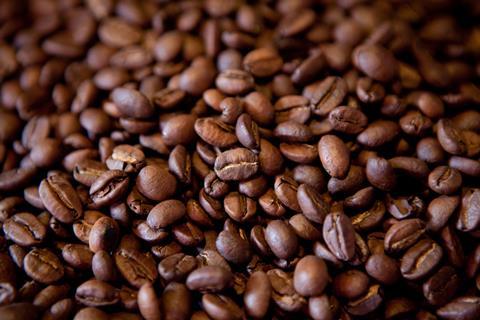
- Exports: $829m (2023)
- UK exports: $29m (2023)
- Biggest markets: United States, Germany, Belgium, Canada, Switzerland, Italy
- Major growing regions: San Martín, Cajamarca, Junín, Amazonas, Cusco
- Main varieties: typica, caturra, bourbon, catimor, pache, geisha
- UK suppliers and retailers offering Peruvian coffee: Pact Coffee, Union, Cafédirect, M&S, Sainsbury’s, Waitrose, Asda
The country also produces exclusively arabica coffee, grown from plant varieties such as typica, bourbon and geisha. These plants are prized for their aromatic coffee producing qualities, but are more delicate and sensitive to changes in the climate than hardier robusta producing varieties. Grown in countries like Brazil, Vietnam and India, robusta producing plants are typically used to make cheaper, instant or espresso-style coffee.
Within arabica producing plants, Corby says, the more prized varieties like geisha – from which highly sought after speciality coffees can be grown – tend to be the most susceptible to leaf rust.
So, in the face of the threat posed by climate change, why don’t farmers switch to hardier varieties?
Why growing arabica coffee is worth the risk
Leonid Herrera Paullo, general manager at CAC Jose Olaya, a coffee co-operative and exporter based in the city of Quillabamba, says some of its growers did replant hardier arabica producing varieties like catimor in the wake of the 2013 pandemic.
“It can help as these [varieties] are more resistant to the problem, but this has changed the profile of the coffee in the cup,” he says, adding this made it harder to achieve speciality certification – given to coffee’s ‘graded’ 80 points and above by professional cuppers known as Q Graders – which made these coffees less lucrative for export.
“Our farmers are trying to go back to bourbon and typica with good fertilising, but with temperatures rising there is always the fear of another outbreak.”
The vastly differing prices commanded on commodity markets for different kinds of beans demonstrate why Peru remains committed to growing arabica, organic arabica and speciality coffee.
Intercontinental Exchange (ICE) futures prices for green (unroasted) robusta beans have averaged out at $2,430 per metric tonne over the last two years. The mean price of arabica beans was 70% higher over the same period – commanding $4,150 per metric tonne, on average.
Mintec Benchmark prices, meanwhile, show organic arabica beans from Peru have commanded a 24% premium above the futures price for standard arabica beans on average over the last two years.
How much speciality coffee does Peru produce?
If a grower can achieve speciality certification for their beans, the financial incentives can be greater still. As speciality coffee is often purchased by roasters from other countries directly, prices negotiated can far exceed beans sold off the open market.
Corby says Pact is prepared to pay “double the market price” for “excellent single estate speciality” arabica beans.
He cautions, however, that the varieties typically used to produce speciality coffee such as geisha have a much lower yield per hectare. For this reason, and their susceptibility to diseases like coffee leaf rust, Pact discourages the farmers it works with from devoting all their land to growing these varieties.
“What we’re doing at Pact is working with these very small farmers that have one to two hectares of land and helping them to drive efficiency in terms of production and ensure they are getting the best yield per hectare,” he says. “No farm in the world in any agronomic pursuit can make 100% of what they produce at the very highest standard.”

Currently, just 5% of Peru’s coffee exports meet the standards required to be labelled as speciality coffee. But Portugal says Peru’s government wants to grow the number of licensed Q Graders able to grade speciality coffee in market. It has worked with the co-operative group Café Peru (Central Café y Cacao) to build a centre in the capital of Lima where individuals can train to receive the Coffee Quality Institute certification.
“Currently there are around 6,000 speciality coffee producers in Peru, mainly producing between 60kg to 400kg per year,” he says. “Our goal is to have 100 new farmers certified every year.”
What can be done to mitigate the impact of coffee leaf rust?
How, then, if Peru is to continue on its path to becoming known as a speciality coffee producer, can the country protect its growers from the threat of climate change?
In the specific case of coffee leaf rust, copper-based fungicides can provide some relief (and don’t require farmers to forgo organic certification), but can damage wildlife and – if used to excess – build up in the soil until it becomes too toxic for coffee to grow.
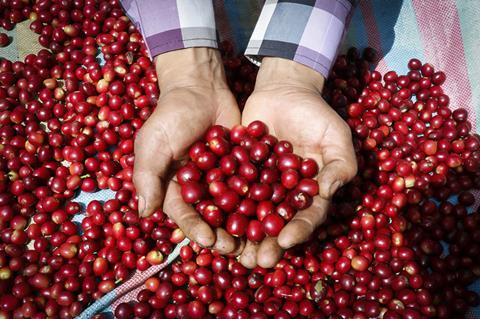
Other treatments are less remedial and more preventative. By replanting deforested areas and improving shade levels on coffee farms, temperature rises can be mitigated and prevent the disease from taking hold, Corby explains.
“Planting shade trees is key right now and will only become more important,” he says. “We have great case studies from work in Brazil, where our purchasing has funded the reforestation of areas of land. You can see a notable drop in farm temperature in correlation to plant growth, not even on top of the farm but adjacent to it.”
Less intensive farming and promotion of greater biodiversity in growing areas will also be crucial to creating environments in which it is harder for diseases like coffee leaf rust to thrive, Corby predicts.
“There’s an element of balance that has to be struck between the requirement for pesticides which you might traditionally use for rust, and allowing biodiversity to increase so that you are naturally protected by insects and yeasts and bacteria that are found naturally around the farm.”
Back on Masias’s farm, this approach has meant encouraging animals like snakes to roam freely across plantations. The organic matter these snakes produce, Masias says, aids the fertilisation of the soil and helps to promote “a permaculture of sustainable growing”.
Masias is also experimenting by spraying his coffee plants with a fungi closely related to Hemileia vastatrix. By “infecting” his plants with this fungi, Masias is able to build up a systemic resistance to rust, much like a vaccination that is activated by a prior infection.
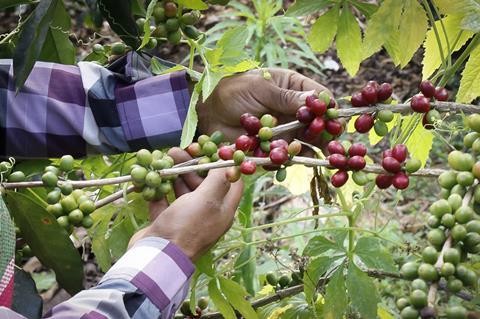
Longer term, however, the best solution to the problem remains to improve disease resistance through cross-breeding. Nestlé, one of the largest players in coffee globally, announced this month its scientists were working on new research it hopes will yield arabica varieties with greater tolerance to disease and drought.
As part of this work, its scientists have developed a “high-quality arabica reference genome”. Nestlé hopes this reference genome – which it has made publicly available – will make it easier to analyse and identify coffee varieties with traits such as better yield, improved flavour and aroma, and greater resilience to disease or drought.
Without financial incentives, however, persuading small-scale farmers in Peru (and elsewhere) to tear up their plantations and plant new, potentially less lucrative, varieties is likely to prove a challenge.








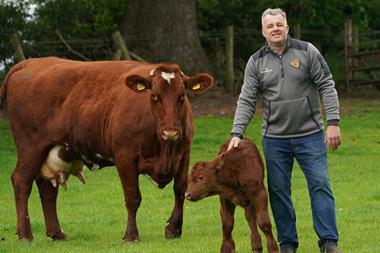



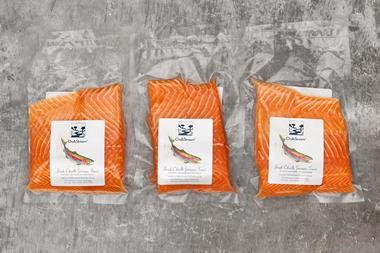
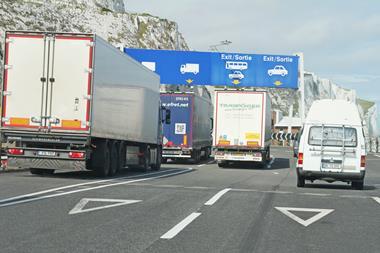






No comments yet